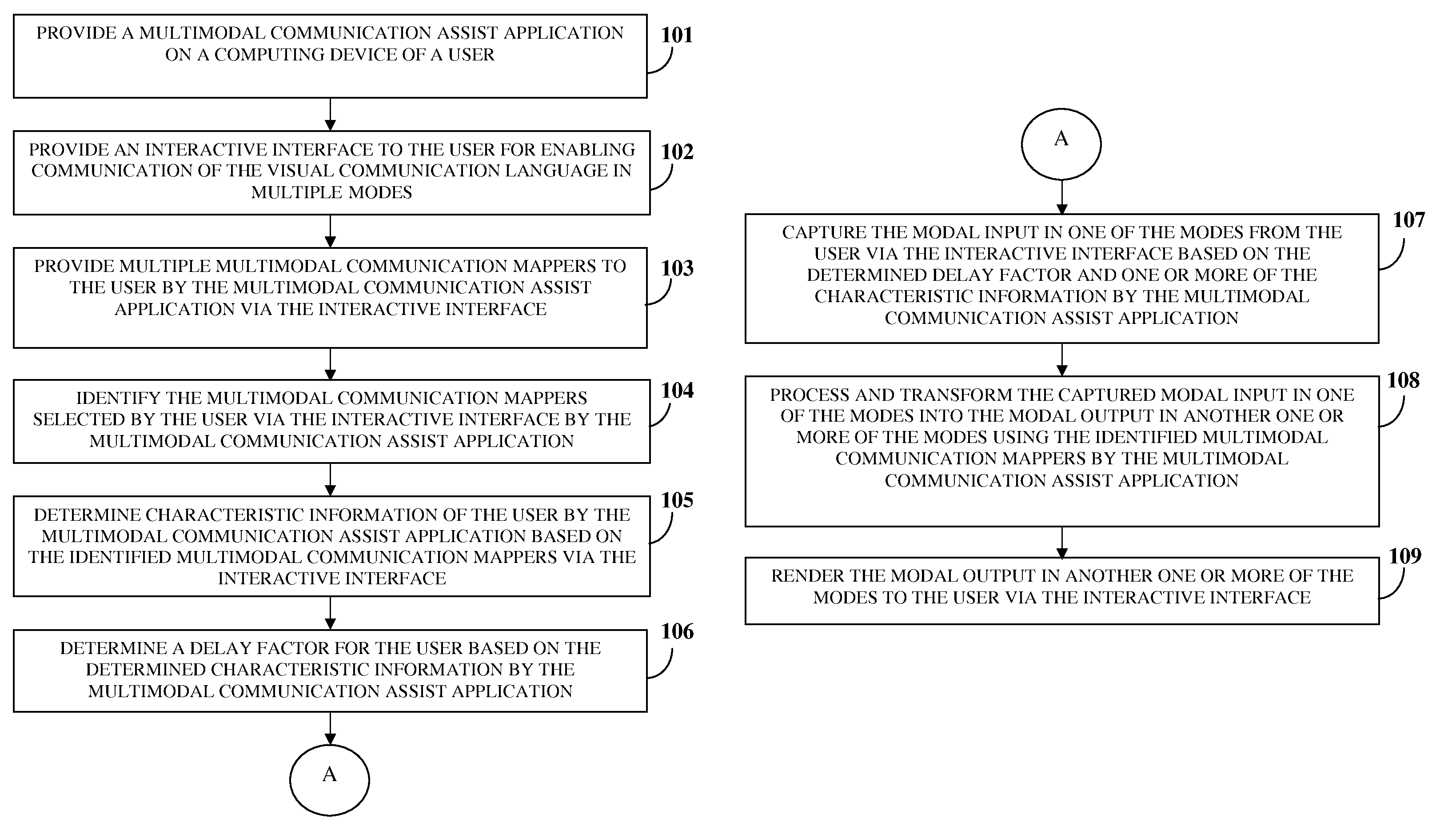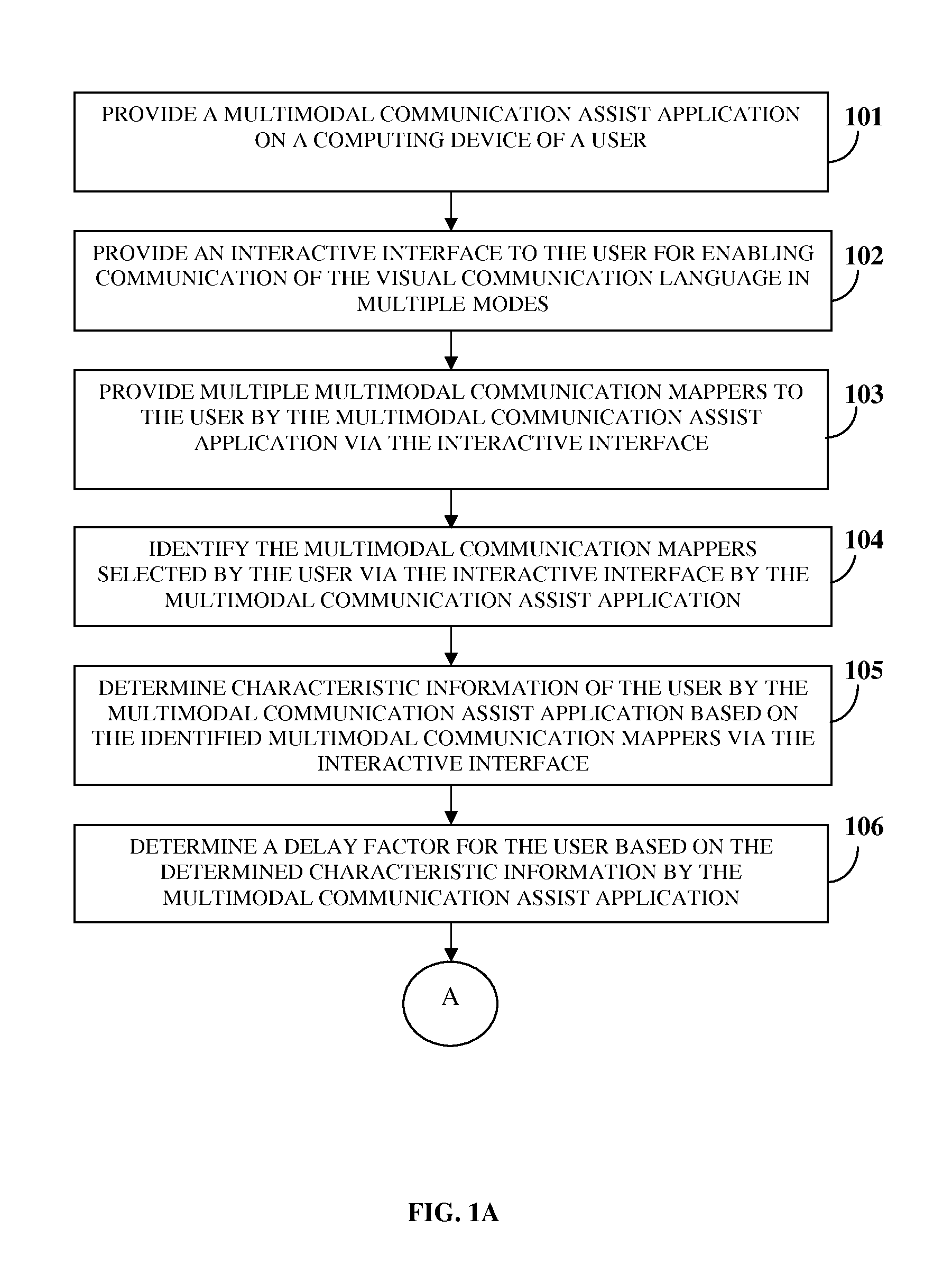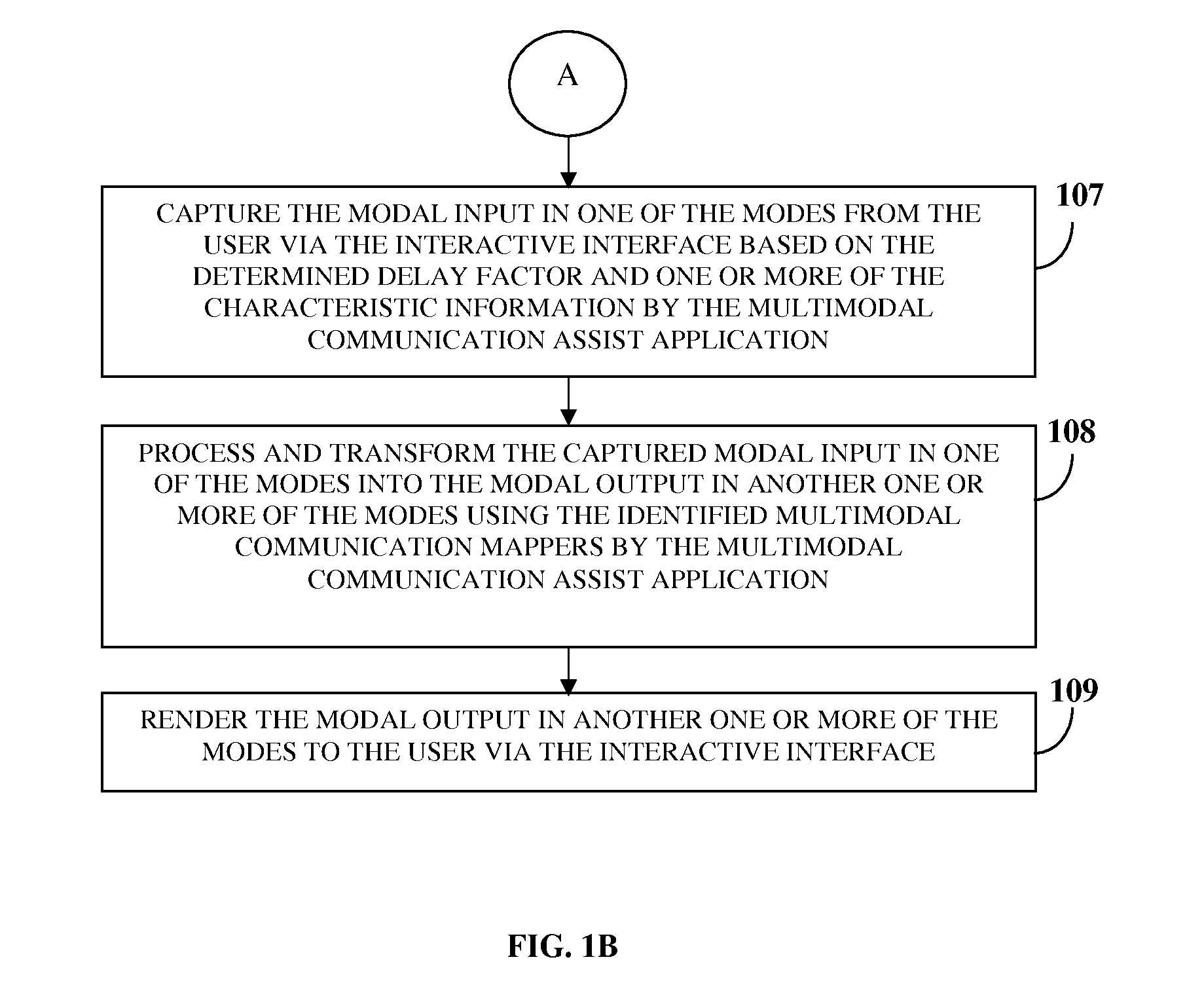Adaptive multimodal communication assist system
a multi-modal communication and assist system technology, applied in the field of computer implemented methods and systems, can solve the problems of limited or no exposure, hearing impairment and speech disabilities, and inability to generalize to work with user defined gestures,
- Summary
- Abstract
- Description
- Claims
- Application Information
AI Technical Summary
Benefits of technology
Problems solved by technology
Method used
Image
Examples
Embodiment Construction
[0054]FIGS. 1A-1B illustrate a computer implemented method for assisting a user to learn and / or communicate in a visual communication language in one or more of multiple modes. As used herein, the term “visual communication language” refers to a communication language comprising, for example, meaningful shapes, structures, sign patterns, gestures, etc., for expressing thoughts, expressions, messages, etc., of a user. Also, as used herein, the term “modes” refers, for example, to a visual mode, a text mode, an audio mode, etc., and any combination thereof, for communicating thoughts, expressions, messages, etc., of the user. The visual mode of the visual communication language comprises visual elements, for example, a user's hands, gestures, movements of a user's hands, etc., that are visually perceptible to the user or another individual. The text mode of the visual communication language comprises text elements, for example, characters, letters, numbers, words, etc., that are reada...
PUM
 Login to View More
Login to View More Abstract
Description
Claims
Application Information
 Login to View More
Login to View More - R&D
- Intellectual Property
- Life Sciences
- Materials
- Tech Scout
- Unparalleled Data Quality
- Higher Quality Content
- 60% Fewer Hallucinations
Browse by: Latest US Patents, China's latest patents, Technical Efficacy Thesaurus, Application Domain, Technology Topic, Popular Technical Reports.
© 2025 PatSnap. All rights reserved.Legal|Privacy policy|Modern Slavery Act Transparency Statement|Sitemap|About US| Contact US: help@patsnap.com



